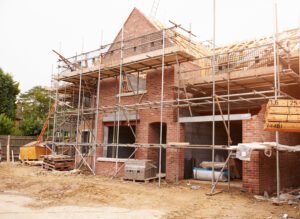
Labour’s affordable housing plan ‘needs more flexibility,’ say small developers

Labour’s plan to mandate that developers build affordable housing on at least 50% of “grey belt” land could render 80% of small development sites unviable, according to research by tech firm Viability. The study suggests that reducing the requirement to 35% would significantly improve feasibility, making 30% of sites viable for small developers.
Viability analysed small-scale grey belt sites within the London green belt, an area where house prices are among the highest in the UK, and where developers can typically achieve strong returns. The research assumed a 20% profit margin as the minimum for developers to sustain operations and secure bank funding, and that landowners would only sell if offered at least 10% more than the current land value.
The study found that if the government enforces the 50% affordable housing target, 80% of sites would present a “significant financial risk” to developers and would likely not proceed. Reducing the affordable housing ratio to 35% would increase the proportion of viable sites to 30%.
Labour’s broader reform of the planning system aims to build 1.5 million homes over the next four years, including on grey belt land—previously developed green belt sites requiring cleanup and repurposing. Local councils in England have been assigned mandatory housing targets, with Deputy Prime Minister Angela Rayner urging council leaders to view housing development as both a professional responsibility and a moral obligation.
The Ministry of Housing, Communities and Local Government’s ongoing consultation on the reforms, which closes on September 24, maintains that the 50% affordable housing goal is “subject to viability” of the site. If a developer proposes building less than the 50% target, they must submit a viability assessment, which local authorities can reject if they believe the developer is paying too much for the land. The consultation also seeks input on whether local planning authorities should be allowed to set lower targets in “low land-value areas” to encourage more building in northern England.
Henry Mayell, co-founder of Viability, supports the government’s push for more housebuilding but argues for greater flexibility to lower costs for small developers tackling small sites. “It’s essential to ensure that development remains financially viable. The stopping point for any developer building homes is whether the site is financially feasible,” Mayell said.
Small developers are responsible for about a quarter of the 200,000 new homes built each year. Mayell noted that small developers must consider a wide range of costs, including land cleanup, biodiversity improvements, and providing infrastructure for local communities, along with the housing mix.
Affordable housing, according to Mayell, typically costs between 85% and 90% of the construction cost of private market homes, but is sold to housing associations and local authorities at 50% to 70% of market rates. “Delivering affordable homes loses developers money, so profits must come from market homes,” Mayell said. “Developers need to earn their profit margins to stay in business, and new regulations are making this increasingly difficult.”
The Ministry for Housing, Communities and Local Government disputed Viability’s findings, stating: “We do not recognise these figures. Developers have some flexibility in exceptional circumstances, but they must provide strong evidence if they cannot meet our expectations on affordable housing.”
David O’Leary, Executive Director of the Home Builders Federation, acknowledged the government’s efforts to improve the planning process but noted the increasing costs imposed by local and national policies, such as the future homes standard, biodiversity net gain requirements, and the rising demand for social housing. “While public bodies have the right to determine the social benefits derived from development, this must be done sensibly. Setting targets too high risks halting development altogether, undermining overall housing supply,” O’Leary said.
Viability, whose software automates land assessment for small developers—a capability usually reserved for industry giants—hopes to empower small property developers with data-driven insights to work more effectively with local authorities. The company has received funding from Innovate UK and officially launches on September 16, following two years of development.
“Our mission is to tackle the housing crisis by supporting SME developers,” Mayell said. He explained that Viability’s software significantly cuts the time needed for developers to evaluate potential sites. “What used to take days of traditional research can now be done in minutes with a 2% accuracy of developer estimates,” he added, highlighting the potential of technology to streamline the development process and contribute to meeting the UK’s housing needs.
Read more:
Labour’s affordable housing plan ‘needs more flexibility,’ say small developers
